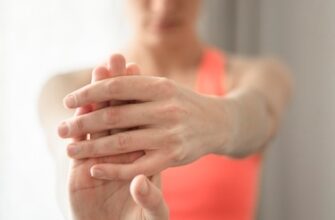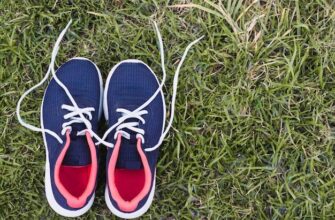Best Running Shoes For Walking On Concrete
Walking on concrete can be tough on your feet, especially if you’re not wearing the right shoes. The hard surface can cause discomfort, pain, and even injury if you’re not properly supported. That’s why it’s important to invest in a pair of running shoes that are designed to provide the necessary cushioning and support for walking on concrete.
1. Importance of Choosing the Right Shoes
When walking on concrete, your feet are subjected to more impact than on other surfaces. The unforgiving nature of concrete can lead to foot and leg pain, shin splints, and even stress fractures. Choosing the right shoes can help alleviate these problems and provide a more comfortable walking experience.
2. Features to Look for in Running Shoes for Concrete
When looking for the best running shoes for walking on concrete, there are several key features to consider:
Running shoes with ample cushioning can help absorb the shock of each step and reduce the impact on your feet and joints. Look for shoes with thick midsoles and additional cushioning in the heel and forefoot.
Walking on concrete can put strain on your arches, so it’s important to choose shoes with proper arch support. Look for shoes with built-in arch support or removable insoles that can accommodate custom orthotics if needed.
Walking on a hard surface like concrete requires shoes with good stability to prevent your feet from rolling inward or outward. Look for shoes with a wide base and firm midsole to provide stability and prevent overpronation or supination.
Walking on concrete can wear down shoes quickly, so it’s important to choose shoes that are durable and can withstand the constant impact. Look for shoes made with durable materials like rubber outsoles and reinforced toe boxes.
3. Top Picks for Running Shoes for Walking on Concrete
The Nike Air Zoom Pegasus 36 is a versatile running shoe that provides excellent cushioning and support for walking on concrete. With its Zoom Air units in the forefoot and heel, it offers responsive cushioning to absorb impact. It also features a breathable mesh upper and a durable rubber outsole.
The Brooks Ghost 12 is another great option for walking on concrete. It offers a comfortable fit with a cushioned midsole and a supportive heel counter. The shoes also have a durable rubber outsole and a breathable mesh upper to keep your feet cool and dry.
The New Balance 990v5 is a classic running shoe that provides superior cushioning and support. It features a dual-density collar for added comfort and stability, as well as a Vibram rubber outsole for durability. The leather and mesh upper also adds to the shoe’s overall durability.
The ASICS Gel-Nimbus 22 is a high-performance running shoe with excellent cushioning and support. It features ASICS’ Gel technology in the forefoot and rearfoot, providing superior shock absorption. The shoes also have a breathable mesh upper and a durable rubber outsole.
The Saucony Triumph ISO 5 is a comfortable and supportive running shoe for walking on concrete. It offers a plush, cushioned ride with its PWRGRID midsole and EVERUN topsole. The shoe also has a durable rubber outsole and a breathable mesh upper.
4. FAQs:
Q: Can I use regular running shoes for walking on concrete?
A: While regular running shoes can provide some cushioning and support, they may not be specifically designed for walking on concrete. It’s best to choose running shoes that have additional cushioning and support features specifically for walking on hard surfaces.
Q: How often should I replace my running shoes for walking on concrete?
A: It is recommended to replace your running shoes every 300-500 miles or every 6-12 months, depending on your usage and the wear and tear on the shoes. If you frequently walk on concrete, you may need to replace your shoes more frequently.
Q: Can I use orthotic insoles with my running shoes for concrete walking?
A: Yes, many running shoes have removable insoles that can be replaced with custom orthotic insoles if needed. This can provide additional arch support and comfort for walking on concrete.
Q: Are there any exercises I can do to prevent foot and leg pain when walking on concrete?
A: Yes, there are several exercises that can help strengthen your feet and legs and prevent pain when walking on concrete. Some examples include calf stretches, toe curls, and foot and ankle circles. It’s always best to consult a healthcare professional or physical therapist for personalized advice.
Q: Can walking on concrete cause shin splints?
A: Yes, walking on concrete can put stress on the muscles and connective tissues in your legs, which can lead to shin splints. Wearing proper footwear with cushioning and support can help alleviate this issue.
Q: Do running shoes for concrete walking need to be waterproof?
A: While waterproof shoes can be beneficial in wet conditions, they are not a necessity for walking on concrete. It’s more important to prioritize cushioning, support, and durability when choosing running shoes for concrete walking.
Q: Can I use running shoes for walking on other surfaces besides concrete?
A: Yes, running shoes designed for concrete walking can also be used for walking on other surfaces like asphalt, pavement, or gravel. However, it’s important to note that different surfaces may require different levels of cushioning and support.
Q: Should I wear socks with my running shoes for concrete walking?
A: Yes, wearing socks with your running shoes can help prevent blisters and keep your feet dry and comfortable. Choose moisture-wicking socks made of breathable materials to reduce friction and prevent moisture buildup.
Q: Can I use running shoes for concrete walking if I have flat feet?
A: Yes, running shoes with arch support can be beneficial for individuals with flat feet. Look for shoes that provide stability and have built-in arch support or removable insoles that can accommodate custom orthotics if needed.
Q: Can I wear running shoes for concrete walking if I have plantar fasciitis?
A: It is important to consult with a healthcare professional or podiatrist if you have plantar fasciitis. They can provide personalized recommendations for footwear that will best support your feet and help alleviate symptoms.
5. Conclusion
When walking on concrete, it’s essential to invest in the right pair of running shoes that provide adequate cushioning, support, and durability. The Nike Air Zoom Pegasus 36, Brooks Ghost 12, New Balance 990v5, ASICS Gel-Nimbus 22, and Saucony Triumph ISO 5 are all excellent options to consider. Remember to prioritize features like cushioning, arch support, stability, and durability when choosing the best running shoes for walking on concrete. Take care of your feet and enjoy a comfortable and pain-free walking experience on concrete surfaces.















































